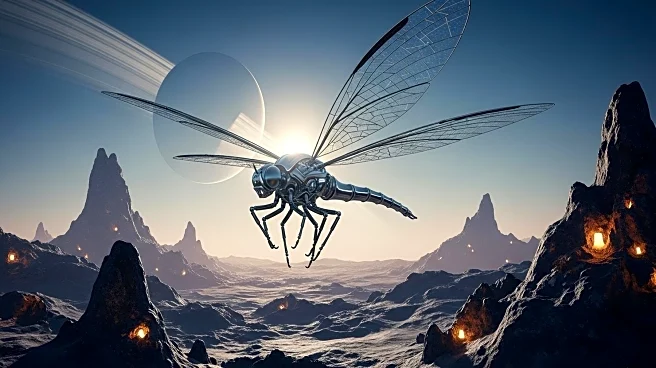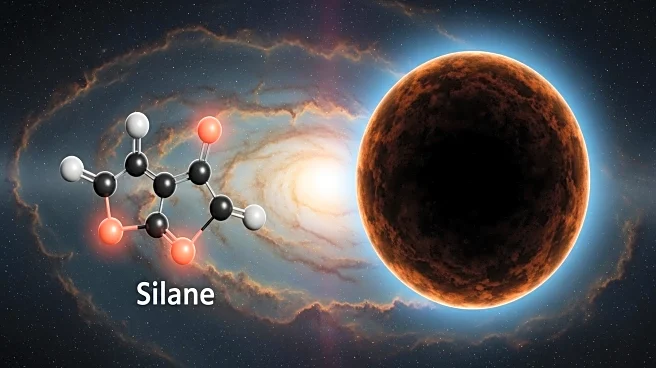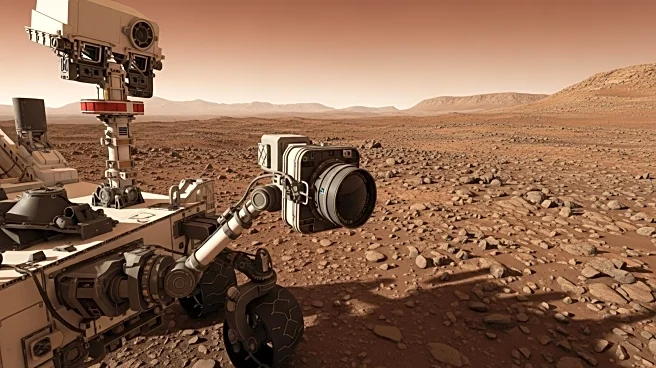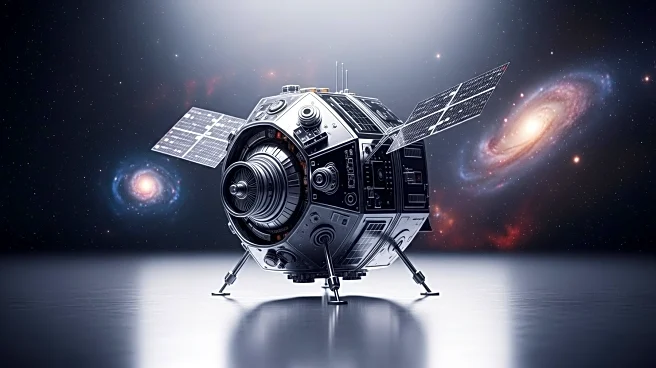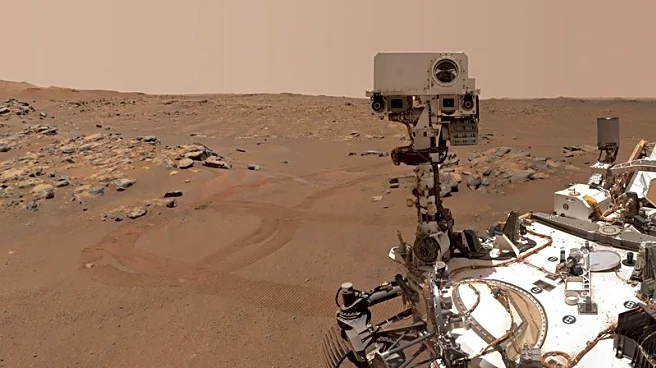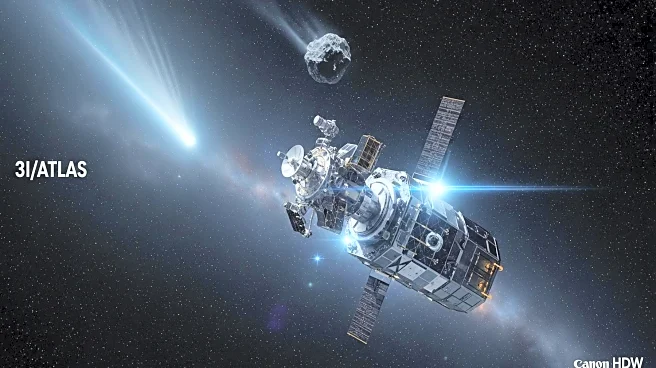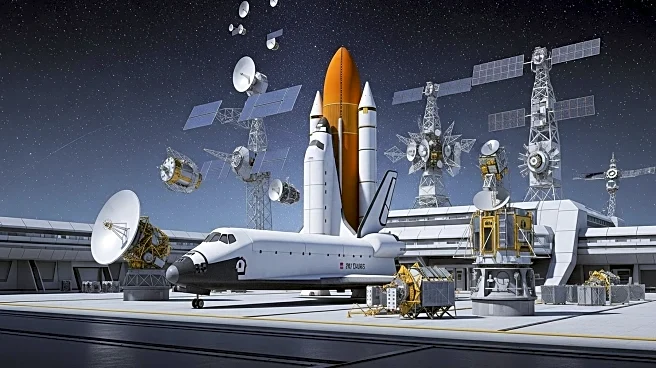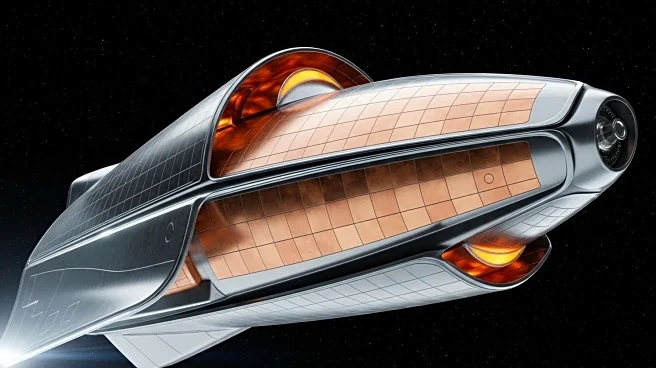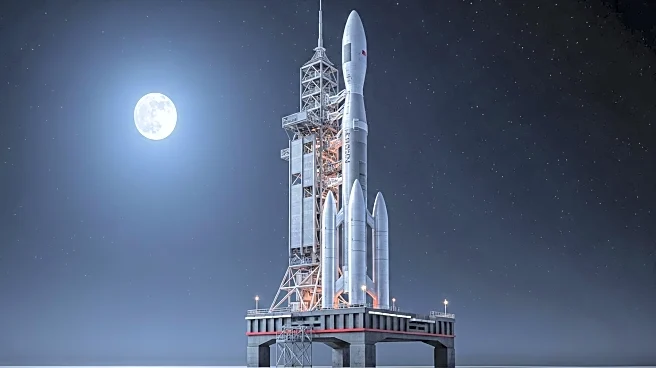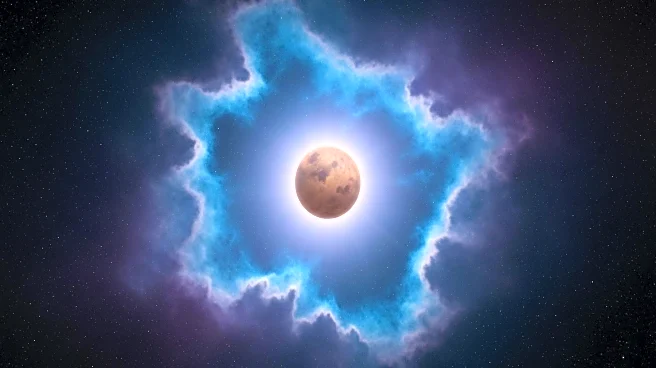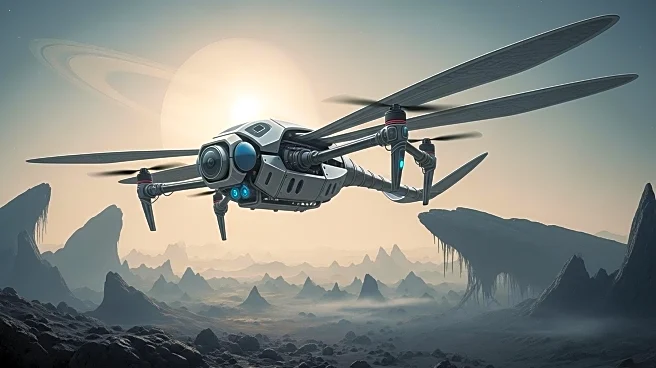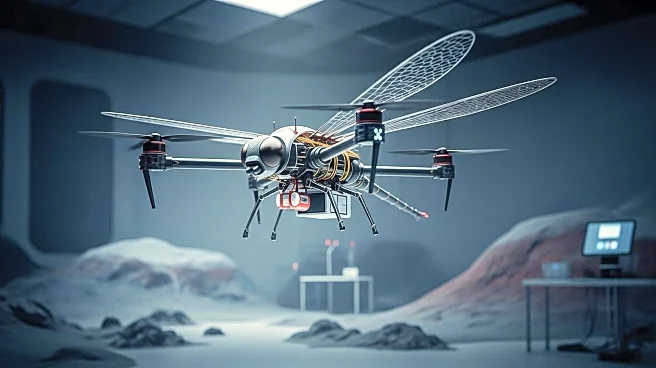What is the story about?
What's Happening?
NASA's Dragonfly mission, a nuclear-powered rotorcraft designed to explore Saturn's moon Titan, is facing significant cost overruns and delays. Originally selected in 2019 with a pre-launch budget of $850 million, the mission's costs have ballooned to $3.35 billion due to supply chain issues, design modifications, and complications from COVID-19. The launch date has been pushed from April 2026 to July 2028. The mission's budget now represents a substantial portion of NASA's Planetary Science Division, impacting future New Frontiers missions.
Why It's Important?
The Dragonfly mission is crucial for advancing space exploration and understanding Titan's environment, which could provide insights into extraterrestrial life. However, the cost overruns and delays highlight challenges in managing large-scale space missions, affecting NASA's budget and future projects. The increased costs have delayed other missions, impacting the agency's ability to pursue new scientific endeavors. The situation underscores the need for effective project management and resource allocation in space exploration.
What's Next?
NASA's Office of the Inspector General has recommended documenting lessons learned and maintaining project cost reserves to support Dragonfly through launch. The mission is progressing with components and scientific payloads being built, and some tests completed. NASA's focus on deep-space missions may protect Dragonfly from budget cuts, but the agency must navigate financial constraints to ensure the mission's success. Future decisions will determine the allocation of resources and the prioritization of space exploration projects.
AI Generated Content
Do you find this article useful?
